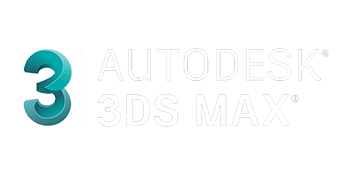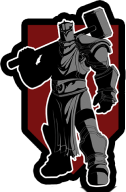NFT and Metaverse services
We offer a diverse range of NFT art and Metaverse development services. Our skilled artists can create unique digital art and build immersive virtual worlds. With experience across various projects, we ensure high-quality results for every need.
We’re passionate about creating NFT art that truly stands out. We have a team of creative 2D artists who pour all their talent and skill into crafting unique and meaningful art that express your ideas. Believing that every NFT art piece should be as unique as the idea behind it, we’re here to help you showcase that uniqueness!
Our comprehensive and meticulous approach to create 3D non-fungible token art ensures that every project we undertake is truly unique and visually striking. Our NFT development system cater to all your needs, from the initial concept to the final deliverables.
You can always count on us to add some pizzazz to your NFTs! Our team takes great care in designing stylish and fashionable assets that make your NFTs stand out from the crowd. We love creating unique and diverse styles to give your collection that special touch.
Our AR/VR proficiency brings immersive virtual worlds to life, while our expertise in designing environments ensures captivating experiences in diverse themes and styles. We create everything for your metaverse in style, from terrain to sky and everyhting in between!
Partnerships
we strive to meet and exceed the expectations of our clients to keep a long term partnership.
Experienced artists
Each of our artists has unique skill and strengths, and their experience combined can overcome any kind of project with different themes and styles.
Competitive price rates
We not only provide art production services, but we also offer competitive and affordable price rates that sets us apart from other studios.





Polydin Studio has an unmatched eye for detail, Every project delivered has exceeded the expectations greatly. They have no problems comprehending your technical requirements and designing assets to fit your needs.
I recently contracted Polydin Studios to work with us on creating a script, storyboards, concept art, 3D models and a floor plan for an animated short meant to pay our respects to the deceased legendary mangaka Kentaro Miura. In order to pay our respect to Miura we held ourselves and Polydin Studio to Berserk’s high standards. Suffice to say that the results speak for themselves at the end of the day, Polydin Studio was able to meet our extremely unreasonable standards and requests promptly with a concrete schedule of updates and timely submissions. I personally highly recommend the team and their work.
Working with Polydin Studio was fantastic. Their dedication to the work is incredible as they listen to you in the process and comprehend your needs well. This I think is one of the most important features an outsource studio should have. They keep in touch on a regular basis, even during their weekends and I have to mention that they are very good at delivering quality products quickly. We certainly did not have a problem in terms of deadlines, even though our deadline was pretty ambitious. Thanks to the entire team for all their dedication. I believe we'll work many more times in the future.
Polydin was responsible for creating sci-fi designs for our latest Metaverse project “AlterVerse”, they have been dedicated and quick to grasp our visual style. Overall, our experience with them has been really positive. Polydin studio has a great talent pool and they have been fast at responding to our revisions. We'll keep them busy!
A very pleasant and successful experience. Polydin Studio delivered our project as promised, neat and outstanding. Communications were precise and to the point and I'm very happy with the results. Since we had vague concepts, they used their interesting creativty to come up with stuff that were suitable for our NFT collection.
FAQs
To make NFT art, you'll need the following:
Digital Art: You'll need to create the digital art yourself or by an NFT art studio, or have an existing digital art piece that you want to convert into an NFT. This can be any type of digital art, including illustrations, animations, photographs, or even videos.
Digital Wallet: You'll need to create a digital wallet that supports the blockchain platform where you want to mint your NFT. There are several wallet options available, including MetaMask, MyEtherWallet, and Trust Wallet.
Cryptocurrency: Most NFT marketplaces require you to pay in cryptocurrency to mint and sell your NFT. You'll need to purchase the required cryptocurrency for the blockchain platform where you want to mint your NFT.
Blockchain Platform: You'll need to choose a blockchain platform to mint your NFT, such as Ethereum, Binance Smart Chain, or Polygon. Each platform has its own unique features, benefits, and fees.
Smart Contract: You'll need to create a smart contract that contains the details of your NFT, such as its name, description, and image.
NFT Marketplace: You'll need to list your NFT for sale on an NFT marketplace such as OpenSea, Rarible, or SuperRare.
Creating NFT art can be a complex process, and you may need to seek guidance from experienced NFT creators or an NFT art studio if you're new to this. It's important to understand blockchain technology and navigate the various platforms available to create and sell your NFT successfully.
There are several blockchain platforms that NFT artists use to create and sell their NFTs. Some of the most popular platforms are:
Ethereum: Ethereum is the most popular blockchain platform for creating and selling NFTs. It's an open-source blockchain that supports smart contracts, which are necessary for creating NFTs.
Binance Smart Chain: Binance Smart Chain is a blockchain platform that's built on top of the Binance Chain. It's fast and relatively inexpensive compared to Ethereum, making it a popular alternative for creating and selling NFTs.
Polygon: Polygon (formerly Matic) is a Layer 2 scaling solution for Ethereum. It's a popular choice for creating and selling NFTs because it's fast, inexpensive, and supports Ethereum-compatible smart contracts.
Flow: Flow is a blockchain platform that's designed specifically for NFTs and other digital assets. It's fast, scalable, and has a user-friendly development environment.
These are just a few of the many blockchain platforms that NFT artists use to create and sell their NFTs. Each platform has its own unique features, benefits, and drawbacks, so it's important to do your research and choose the one that's best for your needs.
The value of an NFT is determined by various factors, including:
Scarcity: The rarity of an NFT is a significant factor in determining its value. If there are only a few copies of a particular NFT available, it can increase its perceived value among collectors.
Popularity: The popularity of an artist, creator, or brand can also influence the value of an NFT. If an NFT is associated with a famous artist or brand, it can increase its value.
Uniqueness: An NFT that is unique and one-of-a-kind is generally more valuable than an NFT that is part of a larger collection. For example, a unique digital artwork is likely to have more value than a print of the same artwork.
Condition: The condition of an NFT, such as its quality, resolution, or metadata, can also influence its value. Higher quality NFTs with better metadata can be more desirable among collectors.
Ultimately, the value of an NFT is determined by the market demand for it, which can be influenced by various factors. It's important to note that the value of an NFT can fluctuate over time and can be subject to market volatility, just like any other asset.
While the underlying blockchain technology of NFTs provides a level of security and authenticity, the digital assets associated with NFTs can still be copied or shared without permission. It's important to understand that owning an NFT does not prevent the artwork from being reproduced or screenshotted.
However, the uniqueness and value of an NFT lie in its associated metadata and ownership record stored on the blockchain. The blockchain serves as a decentralized ledger that verifies the ownership and provenance of the NFT. This helps establish the originality and authenticity of the artwork.
While the NFT itself cannot be copied or stolen, the digital representation of the artwork can be duplicated. This means that someone may create a copy of the image, video, or other digital content associated with the NFT. However, these copies lack the associated ownership record and verified authenticity of the original NFT.
To protect against unauthorized copying or theft of NFT art, artists and creators can take certain precautions. They can apply watermarking techniques, limit the resolution or quality of digital files, or use specialized platforms that enforce stricter usage and distribution policies. Additionally, artists can include contractual terms or licenses that specify how the NFT artwork can be used, ensuring that it is not misrepresented or exploited without permission.
It's important for collectors and buyers to be cautious when purchasing NFT art and to verify the reputation and authenticity of the artist and the NFT platform. Understanding the terms and conditions associated with the NFT purchase can help mitigate the risk of acquiring unauthorized or illegitimate copies of the artwork.
When searching for a reputable NFT design studio, conducting thorough research is crucial. Begin by exploring various studios and their portfolios. Look for studios that specialize in NFT art creation and have a track record of producing high-quality work. Take your time to assess their style, creativity, and technical skills by examining their previous projects.
Client reviews and testimonials are valuable resources in determining a studio's reputation. Check online platforms, forums, or social media channels where artists and collectors discuss NFT design studios. Pay attention to feedback regarding their professionalism, communication, meeting deadlines, and overall client satisfaction.
Consider the expertise and specialization of the studio. Look for those with experience in creating NFTs in your desired style or genre. A studio's expertise should align with your artistic vision and requirements.
Assess the studio's communication and collaboration process. Open and transparent communication is essential throughout the NFT creation process. Contact the studio with your inquiries or project details to gauge their responsiveness, understanding of your vision, and ability to provide tailored solutions.
Review the pricing structure and terms of the studio. Ensure they offer competitive rates within your budget and provide a clear understanding of what is included in their services. Clarify ownership and licensing rights for the created NFTs.
Additionally, seek recommendations from fellow artists, collectors, or professionals in the NFT space. Their insights and suggestions based on personal experiences can be valuable in making an informed decision.
Remember to trust your instincts and choose a reputable NFT design studio that aligns with your artistic vision, professionalism, and creative goals.
There are several factors that can contribute to the popularity of NFT art, including:
Concept: The concept or idea behind an NFT art piece can make it stand out and resonate with viewers. NFT art that explores unique or thought-provoking themes can generate interest and excitement.
Aesthetics: The visual appeal of an NFT art piece can play a significant role in its popularity. NFT art that features eye-catching designs, vibrant colors, or unique digital effects can capture the attention of viewers.
Artist Reputation: The reputation and recognition of the artist behind an NFT art piece can also influence its popularity. Established artists with a strong following may have more exposure and credibility in the NFT art world.
Timeliness: NFT art that is relevant to current events or trends can also generate buzz and interest. For example, NFT art related to pop culture phenomena or emerging technologies may be popular due to their relevance.
Rarity: NFT art that is scarce or limited in availability can also increase its popularity among collectors. If an NFT art piece is part of a limited edition or one-of-a-kind, it can create a sense of exclusivity and make it more desirable.
The programming language most used for creating NFTs is Solidity, which is a programming language used for developing smart contracts on the Ethereum blockchain. Solidity is specifically designed for creating decentralized applications (dApps) and is the most popular language used for creating smart contracts on Ethereum.
Solidity is an object-oriented language, which means it is designed to represent real-world objects, and is similar to languages like JavaScript and C++. It has features such as inheritance, libraries, and interfaces, making it a powerful and versatile language for creating complex smart contracts, including NFTs.
Using an NFT art studios brings several benefits to artists, collectors, and the art community. Firstly, it establishes authenticity and provenance by providing a unique digital certificate for each artwork, eliminating concerns of duplication or unauthorized use. NFT art platforms also offer global market access, allowing artists to reach a diverse audience and expand their visibility beyond traditional boundaries.
Direct artist-to-collector interaction is facilitated through NFT art studios, fostering deeper connections and community building. Artists can communicate directly with collectors, share inspirations, and sell their artwork without intermediaries. Additionally, the potential for earning royalties on secondary sales is a significant advantage of NFTs. Artists can benefit financially as their artwork increases in value and is resold in the secondary market.
NFTs enable artists to explore new creative horizons and experiment with interactive and dynamic art forms. The digital nature of NFTs allows for animations, audiovisual experiences, and gamified elements, providing artists with greater creative freedom.
Transparency and security are inherent features of NFTs. The use of blockchain technology ensures transparency, traceability, and immutability of transactions, enhancing trust and reducing the risk of fraudulent activities. Artists can prove ownership and protect their intellectual property rights more effectively.
Overall, using an NFT art studio empowers artists, connects them with a global audience, provides financial opportunities, encourages innovation, and enhances transparency and security in the art market.
When working with an Art Outsourcing and NFT design studio, there are several legal considerations to keep in mind. Here are a few key points:
Contracts and Agreements: It is essential to have a written contract or agreement in place that outlines the terms and conditions of the project. This should cover aspects such as project scope, deliverables, timelines, payment terms, intellectual property rights, and any specific legal obligations or responsibilities.
Intellectual Property Rights: Clarify the ownership and usage rights of the NFT artwork created by the studio. Ensure that the contract specifies who retains the copyright and intellectual property rights to the artwork, whether it's the client or the studio. Additionally, consider any licensing or usage rights that may be required for commercial use or future distribution of the NFTs.
Copyright Infringement: Verify that the NFT design studio respects copyright laws and does not infringe on the intellectual property of others. It is important to ensure that the artwork created does not contain copyrighted elements without proper permission or falls within fair use guidelines.
Privacy and Data Protection: If the project involves sharing personal or sensitive information, ensure that the studio has adequate measures in place to protect data privacy and comply with relevant data protection regulations. This may include obtaining necessary consents and implementing appropriate security measures.
Dispute Resolution: Include provisions in the contract for dispute resolution mechanisms, such as mediation or arbitration, in case any conflicts or disagreements arise during the project.
Compliance with Laws: Ensure that the NFT design studio operates in compliance with relevant laws and regulations, including intellectual property laws, consumer protection laws, and any specific regulations related to NFTs and blockchain technology.
It is advisable to consult with legal professionals experienced in intellectual property and contract law to review and tailor the legal aspects of your engagement with an NFT design studio. This will help protect your rights, clarify expectations, and mitigate potential legal risks associated with the project.
Beyond NFT art, Polydin is a game art studio providing comprehensive solutions for game development and related digital art projects. Our game art outsourcing studio provides provide art outsourcing services, allowing you to scale your team and access specialized skills. Our concept art studio brings initial ideas to life with stunning visuals. We also specialize in 3D character production, crafting high-quality, game-ready characters from concept to animation. In addition, our animation and mocap services add dynamic movement and realism.
Let's Discuss Your Idea

